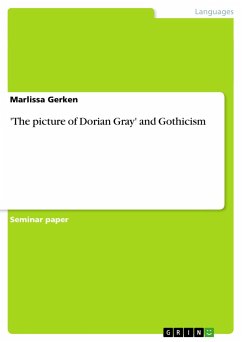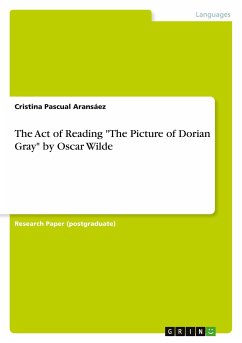Seminar paper from the year 2005 in the subject Didactics - English - Literature, Works, grade: 1,7, Johannes Gutenberg University Mainz (Seminar für Englische Philologie), course: Hauptseminar , language: English, abstract: Today, a Gothic novel is commonly defined as "a story of terror and suspense, usually set in a gloomy old castle or monastery" . This definition is based on the traditional Gothic novel, which was originated by Horace Walpole in 1764 . A number of elements came to be classed as Gothic and by the end of the century, the genre was fully established . However, when examining different Gothic works that have been published since the beginning of the Gothic tradition, one finds that the Gothic cannot be reduced to a scary story with a medieval setting.The Gothic is a genre that changes over time. The traditional elements usually persist, but new features are added to enrich the genre and to catch the spirit of the time. Kelly Hurley made the important observation that the "Gothic is rightly [...] understood as a cyclical genre that re-emerges in times of cultural stress in order to negotiate anxieties for its readership by working through them in displaced (sometimes supernaturalized) form." When a nation is exposed to either internal or external threats, which often cannot be clearly defined, the people begin to feel uncomfortable. The Gothic novel then, according to Hurley, can help these people in distress by giving concrete shapes to their fears.When the Gothic novel first came up at the end of the 18th century, people in Britain were coping with the impact of the French Revolution. The tradition flourished until the 1820s, when Charles Maturin's work Melmoth the Wanderer failed to reach a large readership . In the 1890s then, which is known as the time of the Gothic revival, new Gothic figures emerged with even greater force than at the previous fin de siècle . The Victorian public had undergone great changes, resulting fromthe British Empire being threatened by external and internal forces. Interestingly, the setting was now no longer removed in time and space; Gothic occurrences at this point revolved around the city of London.Oscar Wilde's The Picture of Dorian Gray is an important work of this era; it shows most of the new features of the New Gothic. This paper will focus on the changes in Victorian society that led to a revival of the Gothic novel and discuss the traditional as well as the new elements that have arisen in the Gothic tradition at the end of the 19th century. Wilde's novel will hereby provide the textual evidence.








